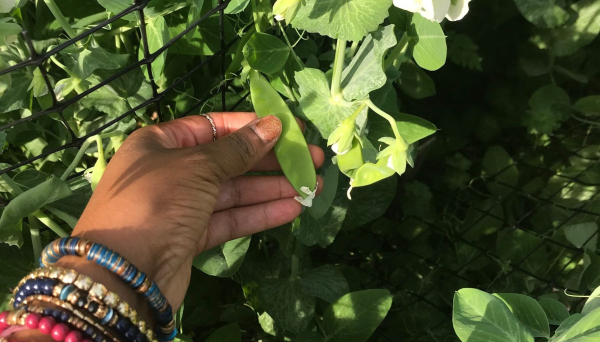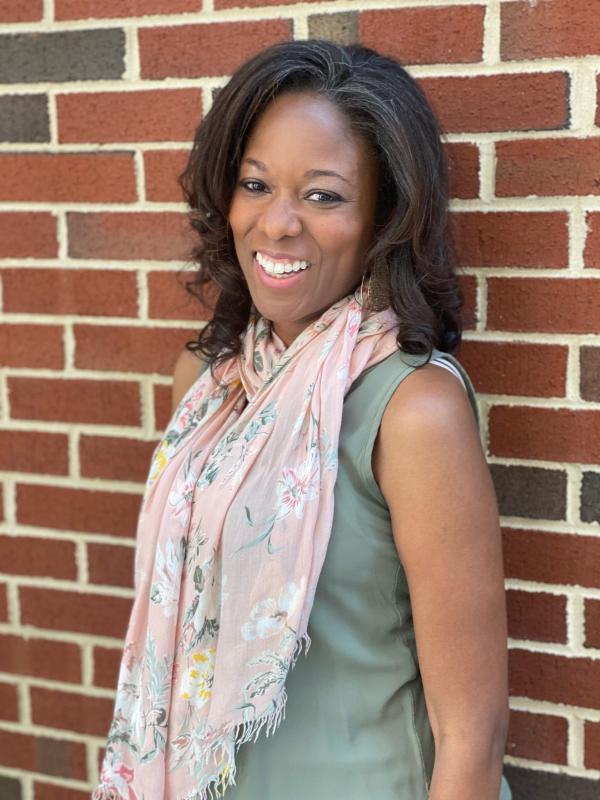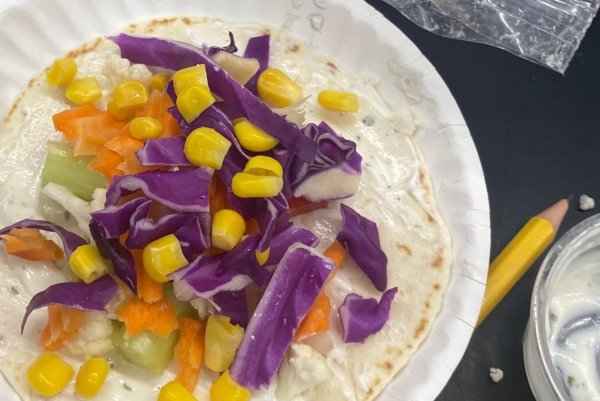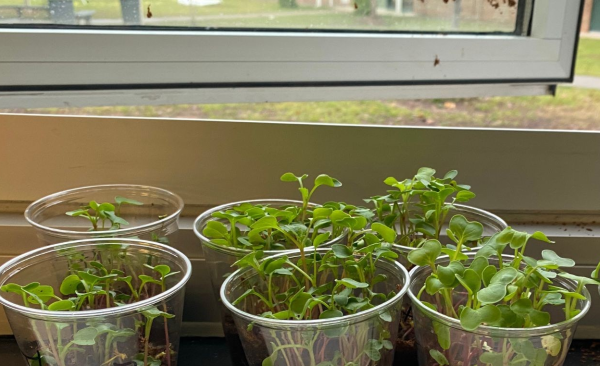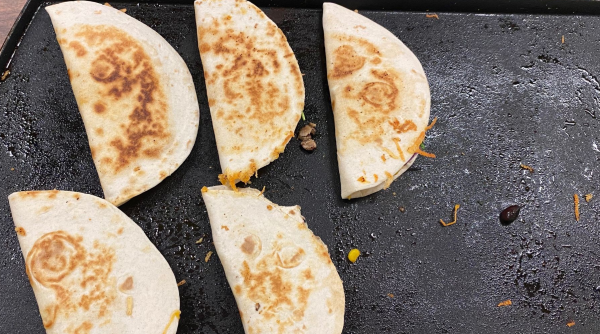March 24, 2023
Cultivating Food and Nutrition Security: Meet Registered Dietitian Nutritionist Kamaria Mason
Kamaria Mason shares her path to nutrition education and why lived experiences are critical to advance food security for all ages.
Food and nutrition security are essential to maintaining schools and communities that foster whole child health equity. However, according to the USDA, in 2021, more than 33 million Americans lived in households that lacked access to an affordable, nutritious diet, including five million children.
To intensify community-driven solutions to chronic disease prevention in rural communities of North Carolina, Healthier Generation has teamed up with Novo Nordisk, a leading global healthcare company committed to driving change for better health. The Healthier Generation, Healthier North Carolina initiative is centered in community engagement to build collaboration and partnerships toward expanded food access for students, families, and caregivers.
Local health champions and partners like Kamaria Mason, M.S., MPH., RDN., are key to building education and access to nutritious foods. Kamaria is a registered dietitian nutritionist who advocates for nutrition education and chronic disease prevention at all stages of life. Her interest in lived experiences and love for diverse food cultures inspired her career path.
“There are many dominant narratives about why people experience poor health, but I wanted to hear something different. Understanding the lived experiences of individuals within communities is pivotal in addressing health disparities,” Kamaria says. “My curiosity for understanding experiences outside of my perspective led me to public health.”
At the beginning of her career, Kamaria was challenged by the notion that an individual was the cause and cure for health disparities.
“I couldn’t understand why being or eating healthy had to look or taste a certain way. I saw programs centered on ‘fixing the person and their habits’ and fewer initiatives focused on addressing the environmental factors contributing to health disparities. My desire to change this narrative sparked my interest in public health nutrition.”
Access to nutrient-dense foods can be a game changer, Kamaria says. “Unfortunately, access to these foods is not equitable for everyone. In addition to inadequate availability, cost, policies, and even marketing play a role in creating an unequal playing field for economically marginalized communities.”
What is Food and Nutrition Insecurity?
According to the USDA, food insecurity refers to inadequate access to readily available, nutritionally adequate, and safe foods, acquired in socially acceptable ways for all individuals of a household, so they can lead an active and healthy life.
“Food insecurity is not just about having insufficient amounts of food. It includes how food is acquired, and if the food is acquired, can it lead to a healthy quality of life,” Kamaria says.
Nutrition insecurity refers to inconsistent access, availability, and affordability of foods and beverages that promote well-being, prevent disease, and, if needed, treat disease, particularly among racial and ethnic minority populations, under-resourced populations, and rural and remote populations, including Tribal communities and insular areas.
“For sustainable change to occur, our conversations must include practices for addressing nutrition insecurity.”
Partnering with Healthier Generation, Healthier North Carolina
Previously, Kamaria served as program coordinator for the North Carolina Office of Health Equity’s Minority Diabetes Prevention Program (NC MDPP). NC MDPP focuses on existing community resources and gaining a better understanding of the lived experiences of community members through a series called “Community Conversations.”
“It all started with the Healthier North Carolina listening sessions. As a result of Community Conversations, the Office addressed barriers to diabetes prevention program participation and completion. Barriers included inadequate access to healthy food items, transportation, and limited opportunities for safe physical activity,” she says. “Since NC MDPP continues to have a multi-generational impact, I, along with the team at Wholistics Health, shared our experiences with the Healthier Generation team as we strategized around opportunities to engage with parents and students.”
Fostering Nutrition Education in Schools
Schools are centralized locations for accessing resources, Kamaria says.
“For families experiencing food and nutrition insecurity, school cafeterias provide food access through breakfast and free and reduced [price] school lunch programs. In addition to these necessities, schools may have the opportunity to support increased access by partnering with local food banks and markets to host an onsite food pantry or mobile produce market.”
Kamaria also believes schools can serve as public health nutrition hubs. “Partnering with local health departments and consulting with dietitians and health educators to facilitate nutrition education classes or cooking events may be beneficial for increasing student exposure to new or less familiar foods.”
As a co-founder of The Culture of Wellness, an organization focused on creating a food culture where healthy choices are inclusive, balanced, and accessible, Kamaria is passionate about nutrition education in schools.
“I spend a lot of time cooking and providing nutrition education to middle school students. When I’m in the classroom with them, and we try a new recipe, like veggie quesadillas, and they are apprehensive about our toppings for the day, I get excited,” she says. “As we go through the cooking process, they bring up their mini quesadillas to the griddle for me to cook. As I place their quesadillas on the griddle, I add black beans, spices, and a little more cheese. I serve them to the students with salsa, and we do a mindful eating activity as they taste their creations.
As they take their first bites, I see a wave of surprised facial expressions from students, followed by them saying, “Ms. Mason, this is bussin (aka “REALLY good”). Can I have the recipe for this?”
Moments like this give Kamaria hope and optimism for a more equitable future.
“I have hope that current and future students will not only have access to but enjoy preparing healthier foods. Hope that healthy does not have to equal tastelessness and that cultural foods can be celebrated for their healthfulness,” she says.
As the Healthier Generation, Healthier North Carolina initiative continues, Kamaria looks forward to identifying existing community assets as avenues for establishing change.
“Healthier Generation does phenomenal work within communities across the country. I look forward to collaborating, sharing my experiences, and providing my expertise as we strategically plan how to achieve this goal in schools, communities, and perhaps even clinical environments.”
To learn more about the Healthier Generation, Healthier North Carolina initiative, contact program manager Shahnee Haire at [email protected].


